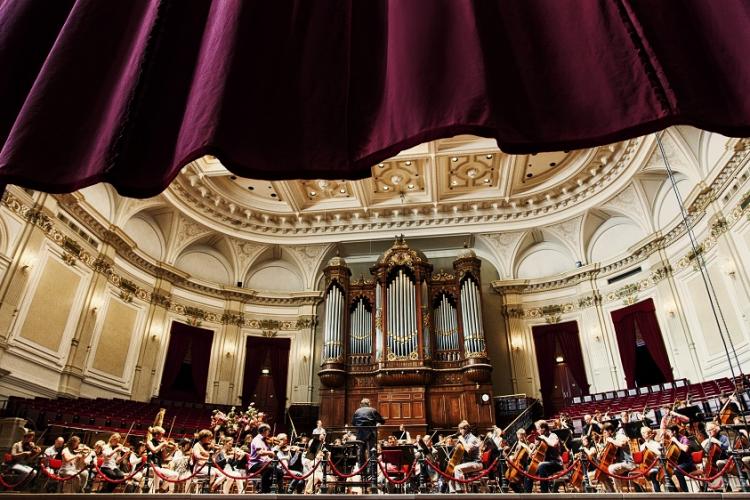TROMPA opens up interesting new possibilities for orchestras, both as performers and as content owners. Renowned conductors interpret the same masterpieces in different ways, reflected by annotated scores and orchestral parts provided to musicians for a given performance project.
The initial Orchestras/Content Owners Use Case was based on the idea that orchestra members, librarians, and conductors should be able to efficiently share their study and rehearsal annotations, and to save annotations from conductors’ scores for later study. It would also allow original conducting scores of famous conductors from the past, such as by Willem Mengelberg, to be digitized, their annotations interpreted and linked to MEI score encodings, and audio-visual concert recordings to be aligned, providing rich study material for scholars, musicians, Kenner und Liebhaber.
Interviews with members of the Concertgebouworkest and its librarians were conducted to determine the work flow of professional orchestras, and learn about common problems and inefficiencies in the process. The gathered knowledge was used to design an application that offers the use of an database of MEI scores and orchestra parts, making digital annotations during the entire process of a performance production, while respected the original workflow as much as possible. Annotations could be saved and shared among orchestra members, but also with other users of the application, and digitized annotations from great conductors from the past could be viewed. Thus a database of old and new annotations for single MEI scores would be filled over time, allowing user to summon them as layers for study.
Videodock made a mockup of this application, which we took back to RCO members for validation. Although orchestra members were impressed by the new possibilities TROMPA offered, understood all the possibilities the application had to offer and acknowledged the added value of the technology, they indicated that, given the choice, they would rather not use it for annotating themselves. The current work flow works so well for them that they would prefer to stay with the old routine and use their energy for artistic challenges. The database of MEI scores and the possibilities of reviewing conductors’ annotations from the past, were warmly welcomed, though.
Having learned about the conservative world of professional orchestras we decided to focus our use case on student orchestras instead. Contact has been established with student orchestras in Delft, Amsterdam and Utrecht. Interviews with orchestra members have been conducted to validate the ideas for same application.
We need to do a few more interviews before we can draw conclusions, but so far, student/amateur musicians, just like their professional colleagues, seem to prefer the current practice of playing from paper and making their own annotations in pencil. However, they too love the database function of the application and are very eager to be able to perform from clean digital scores. They don’t see any added value of having their own annotations saved for posterity, but they, like their professional colleagues, are interested in being able to check out annotations from great conductors from the past.
As said, we still need to do a few more interviews to be absolutely sure, but if the coming interviews confirm the impression we now have, we should focus to what all orchestra musicians would rather like us to provide: a database of MEI scores to play from and access to annotations from famous conductors’ scores. Talks with the Delft student orchestra Krashna Musika have already led to an agreement to do a TROMPA pilot, in which over the coming months the orchestra members collectively will transform an IMSLP pdf of Mahler’s First Symphony into a MEI score.
- Inicie sesión para enviar comentarios


